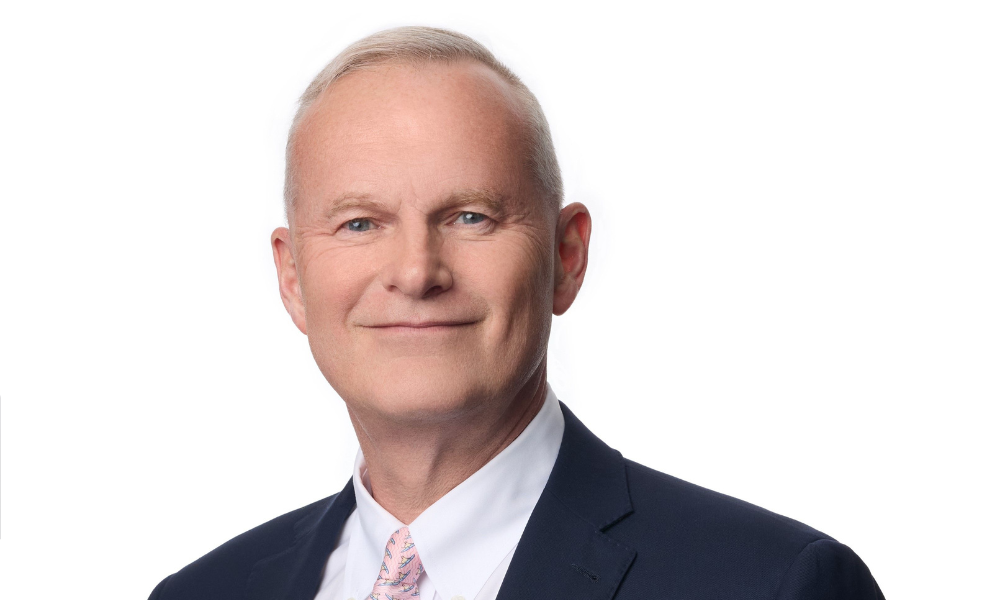'They're much more receptive now to smaller niche strategies because it's clearly where the alpha is,' says PE manager

The overall role of alternatives in institutional portfolios isn’t exactly diminishing, but the expectations around them are shifting, particularly as concerns about liquidity and predictability come to light.
While public equities still carry too much volatility for liability-matching strategies, allocation to alternatives remain critical. What’s changing, according to Stephen Johnston, is the makeup of that alternatives bucket.
He noted that while allocations to alternative investments will likely remain stable, often making up between 25 per cent and 40 per cent of a pension plan's portfolio, the composition within that category is undergoing a significant realignment.
“The era of investing in the world's 10 largest private equity funds and expect that to generate good returns is over,” said Johnston, private equity manager and director at Omnigence Asset Management, noting the strategies that rely primarily on leverage and financial engineering simply don’t generate returns the way they used to.
“That doesn’t work reliably so it's forcing pension plans to look at their allocation and their portfolio construction models very differently. They're much more receptive now to smaller niche strategies, because it's clearly where the alpha is. And they're much more demanding of distributions now. Historically, they wouldn't even ask for them.”
While he doesn’t believe institutional investors are abandoning private equity altogether, he acknowledged they're becoming far more cautious about where they allocate new capital.
“You're going to see much less plain vanilla, over-financialized, like traditional private equity. I don’t know that I would describe it as they’re pulling out,” he added, “but I would certainly describe it as they’re evaluating additional allocations very stringently.”
While private equity still performs well relative to other asset classes, Johnston said the real issue now is the lack of predictability around duration and liquidity. Notably as exit timelines are extending, sometimes by three to five years, due to poor market conditions and uncertain valuations. He believes that’s become a serious concern for institutions with fixed liabilities.
“They like the asset class. What they can’t tolerate is a pickup in duration because that seriously impacts their ability to meet their liabilities,” he said.
In response, pension plans are shifting their attention away from internal rate of return (IRR) models and toward cash-on-cash metrics, “strategies that have high DPIs distributions to paid-in capital,” Johnston explained.
“We want run-rate distributions from our private equity allocations,” he noted.
That’s a fundamental shift in investor expectations. And one that poses challenges for traditional private equity firms, which have long been structured around buy-and-hold IRR-driven strategies, particularly as institutions demand more near-term liquidity,
“They’re reevaluating allocations to any private equity strategy whose duration might push out,” Johnston added.
According to Johnston, what’s happened to the upper tiers of private equity is the fact that it’s been overrun by capital, while returns have been arbitraged away. Meanwhile, large firms managing tens of billions are chasing billion-dollar-plus deals in an environment that no longer rewards scale.
For the better part of a decade, these mega-funds masked the deterioration in value by leaning heavily on leverage. With borrowing costs near zero, the math worked. But now, Johnston argues, rising interest rates have exposed the structural weakness of this model.
“If you can't create value on the acquisition and you've been generating returns just by your willingness to be levered, when cheap leverage goes away, that strategy no longer can make the returns it did,” he said.
He sees the consequences already playing out, pointing to diminishing returns from newer fund vintages, a sluggish IPO market, and pension plans who are increasingly dumping stakes in the secondary market at discounted prices. What's left, Johnston argues, is a high-cost, high-risk exposure that resembles public equities in everything but liquidity.
“You now have levered, correlated beta,” he said. “And it’s expensive. Plan consultants are saying ‘You can’t build out 40 per cent of your portfolio within a levered, expensive copy of the public equity markets, because that’s what you have.’”
That’s led to a reckoning among allocators. According to Johnston, consultants and CIOs are being forced to rethink the entire premise of large-cap private equity and the shift in mindset is driving interest in smaller, more focused managers that offer true value creation through operational improvements, not leverage.
Additionally, Johnston believes institutional investors are demanding evidence of alpha and uncorrelated returns, not financial engineering.
“They’re much more insistent on clear valuation drivers,” he said, “and on how you are operationally going to create value. Not just create value with leverage.”
According to Johnston, much of today’s private equity increasingly resembles public equity, just with higher fees and more risk. The problem, as he sees it, is that some large PE strategies now deliver returns that closely track public equity indices, but with additional layers of leverage and illiquidity.
He’s critical of strategies that rely heavily on debt to manufacture returns, pointing out that pension plans can add leverage on their own without paying private equity fees to do so.
And with rising borrowing costs exposing the limitations of financial engineering, Johnston said institutional allocators are moving quickly to reallocate capital.
“The big jump in the secondary market is just an implicit acknowledgement by pension plans that they see the problem,” he said, adding that while alternatives will remain a key part of portfolios, “you just can’t keep doing the things you were doing for the last 30 years and expect a good outcome.”



